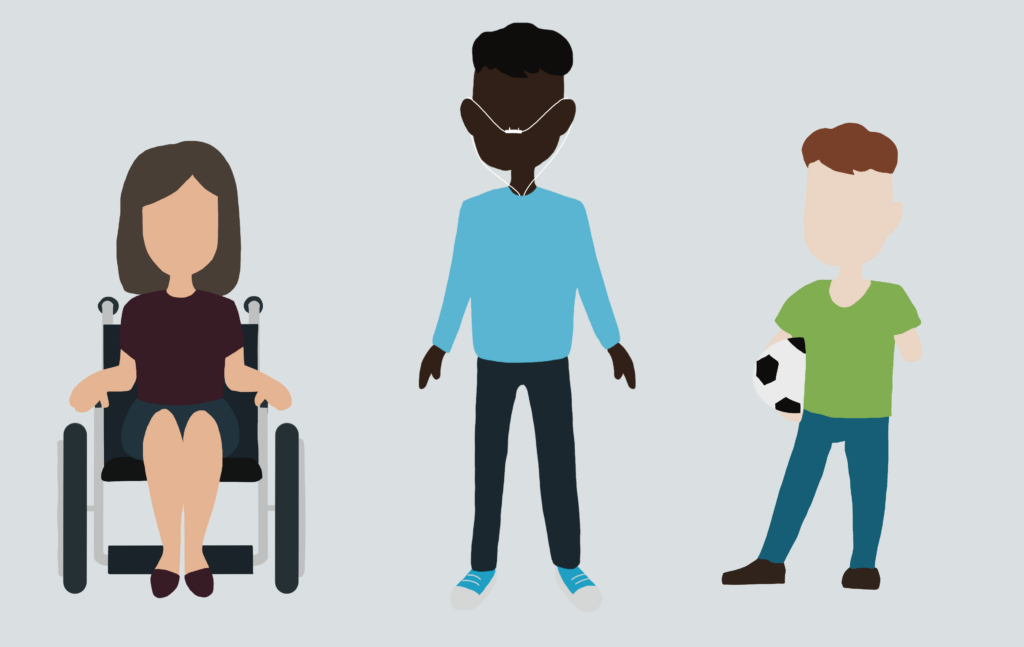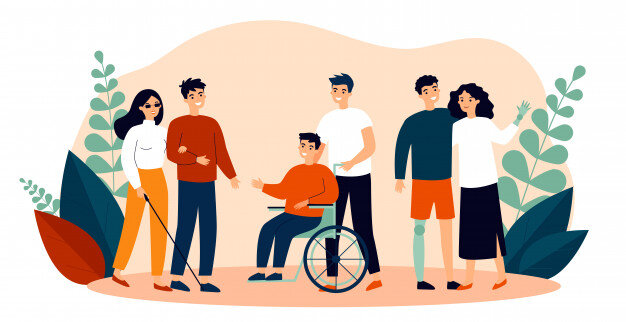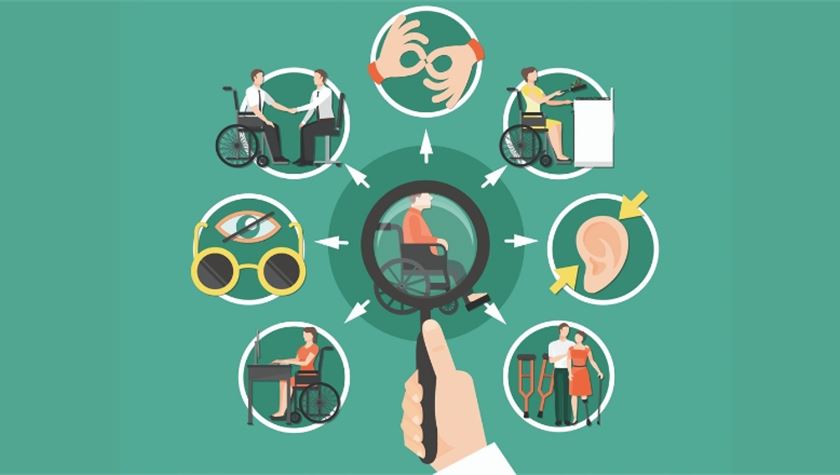By Rania Tsoli,
As the years go by, many of us change: we dare to express ourselves more, we accept things that were once considered unacceptable, and we learn to be more understanding and supportive of the things that might seem different and unusual. There are many things that can be considered different, like the color of our skin, our gender identity, our sexuality, or our abilities, and each of the above, unfortunately, comes with its dark side, when they are frowned upon and viewed as inferior. You are most likely familiar with the terms “racism”, “sexism”, and “homophobia”, to only name a few of the problems in today’s society. However, many are still not aware of the phenomenon known as “ableism”, and what it means for a disabled individual to be a victim of it.
To get more familiar with the concept, let us start things off by understanding the definition and history of the term. Ableism is defined as the discrimination of and social prejudice against people with disabilities. based on the belief that typical abilities are superior to disabilities of any sort. At its heart, ableism is rooted in the assumption that disabled people require “fixing”, and those who have beliefs that align with those of ableist support that a disabled person is defined by their disability. Just like sexism and racism, ableism classifies entire groups of people as “less than”, and includes misconceptions, generalizations, and harmful stereotypes about people with disabilities.
Back when democracy became the most effective political system, people started exerting pressure and began demanding their human rights. It was around the 1960s and 1970s when activists started placing the matter of disability in more of a political context and went on to demand equal rights for disabled individuals. The term “ableism” was first coined by US feminists in the 1980s, and gradually got accepted worldwide. Many activists stressed the fact that society quite often sees individuals without disabilities as superior beings, and demands disabled individuals to qualify to their standard, in order to be treated equally. This inevitably leads to discrimination and a number of prejudices against people with disabilities at every stage of their life.

Unfortunately, ableism is not an uncommon problem in the modern day and can be divided into various categories. For starters, there is physical ableism, which is a form of discrimination against people with a disability, based on their physical appearance. The discrimination based on the mental health condition or the cognitive ability of an individual is also quite common and is known as mental ableism. There is also what we call medical ableism, and it depicts the way the medical model of disability sees the disabled merely as people that need to be “fixed”. As far as practical discriminations go, the ableism that creates structural hindrances is called structural ableism. The essence of it is failing to provide accessibility to people with disabilities in many forms, like the lack of special education in educational facilities, ramps, or accessibility features in websites.
Another type of ableism is cultural ableism, which is the social discrimination against people with disabilities. The examples may include exclusion of disabled people from social gatherings, or generally not treating them as equals in society. When social or cultural ableism gets hostile towards a certain disability or disabled individuals, we would be talking about hostile ableism. An example may include the disownment of a child with a disability. What is known as benevolent ableism is the discrimination where disabled individuals are seen as someone that needs to be taken care of, much like a child; the disabled individual is not seen as a participating adult. There is also ambivalent ableism, and it lies somewhere between hostile and benevolent ableism. Finally, internalized ableism is the most unique category; it is the discrimination done by a person with disabilities against themselves and other disabled individuals. When someone thinks that their disability is something to be ashamed of and sees themselves as inferior to others, it is quite often due to their internalized ableism.
As we have established, ableism is in many cases an everyday phenomenon, and the examples of it – which are mostly based on the types of ableism described above – are plenty. One of the most common ableist attitudes is suggesting a cure for someone’s disability. Many times, people with typical abilities see a disabled person as someone who needs to be “fixed” as if they were some kind of a machine and not as a normal human being. As soon as they meet someone with a disability, they go as far as praying for their cure, suggesting them a remedy or a doctor, or asking them about the treatment they are taking indiscreetly. People also tend to baby-talk to disabled individuals, when they should simply be treated with dignity, just like you would treat a non-disabled person.

Building inaccessible infrastructure is quite a serious problem when it comes to the feeling of comfort and inclusivity any disabled person should feel. Inaccessible infrastructure puts unnecessary hindrances in the lives of persons with disabilities, ignoring their right to an as comfortable as possible lifestyle, and blatantly disrespecting their needs, making the fact that most of our world is built with the “able” in mind crystal clear. Of course, mocking or harassing a disabled individual should not even be a matter of deliberation as to whether it is ableist behavior or not, but ableism sometimes takes a form that is trickier to pinpoint – that would be using ableist language. For example, complimenting someone by telling them that they are beautiful despite their disability, or that they do not look like a disabled person is more of a backhanded compliment, even when it is unintentional, and is also an example of an ableist attitude. Also, using words that refer to a disability or illness, like “psychotic” or “bipolar”, is part of an ableist dictionary that sees disability as inferiority.
Being disabled is surely not an easy task; especially in a world built for those that happen to have typical abilities. However, no matter how difficult a disabled person’s everyday life might be, from a practical to a mental and emotional point of view, it is bound to get a little easier when they are met with the proper attitude. By respecting them, keeping their needs in mind, and understanding that disability is not equal to “inferior”, “damaged”, or “weak”, we can make their experiences that much greater. They do not need pity, childlike treatment, and constant sugar-coating; instead, they want to be referred to and viewed as normal individuals, that just so happen to be a bit different than the rest.
References
- Ableism: Definition, Meaning, Origin and Examples of an Ableist Society, wecapable.com, Available here
- Ableism 101: What it is, what it looks like, and what we can do to fix it, accessliving.org, Available here




